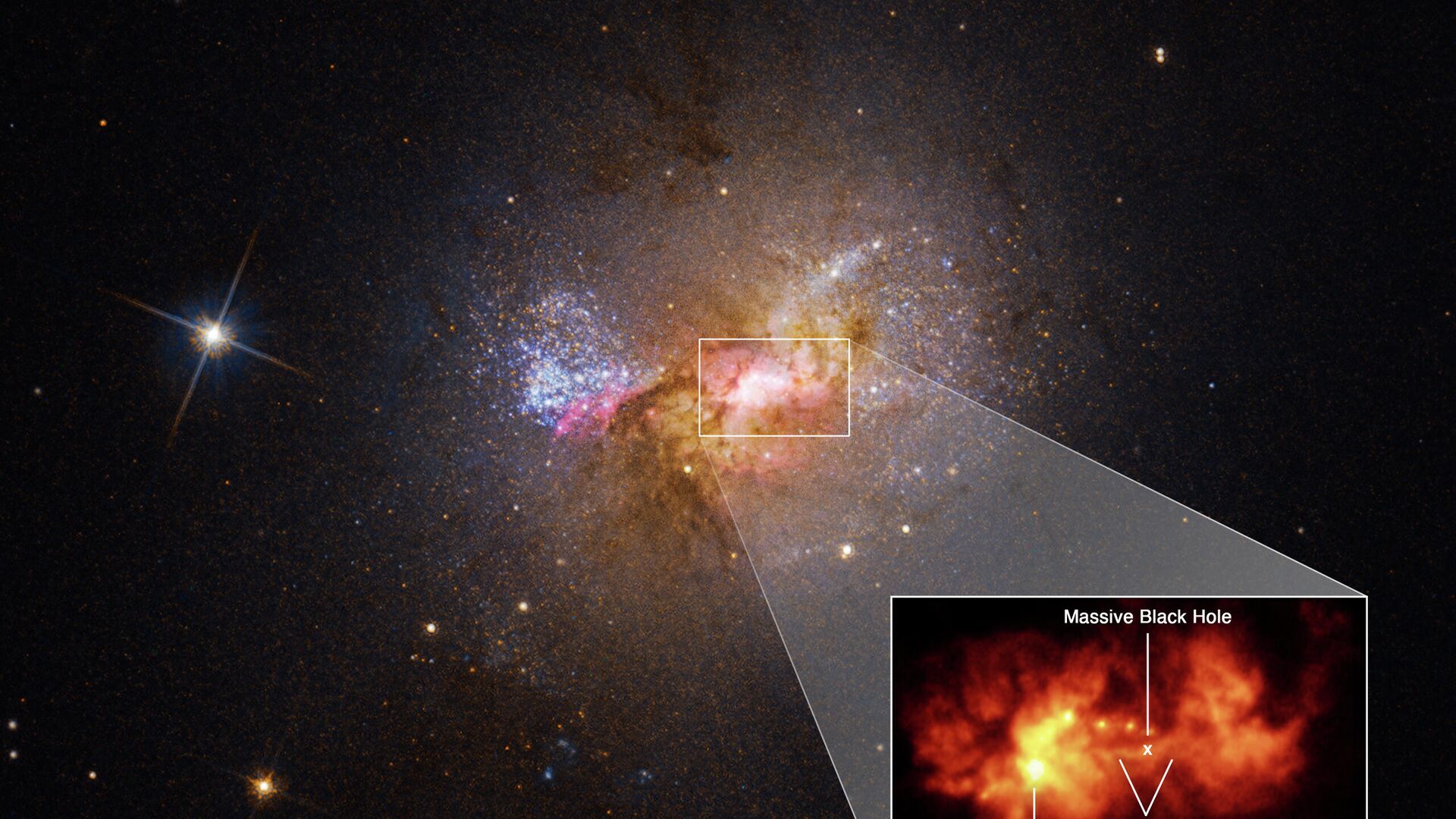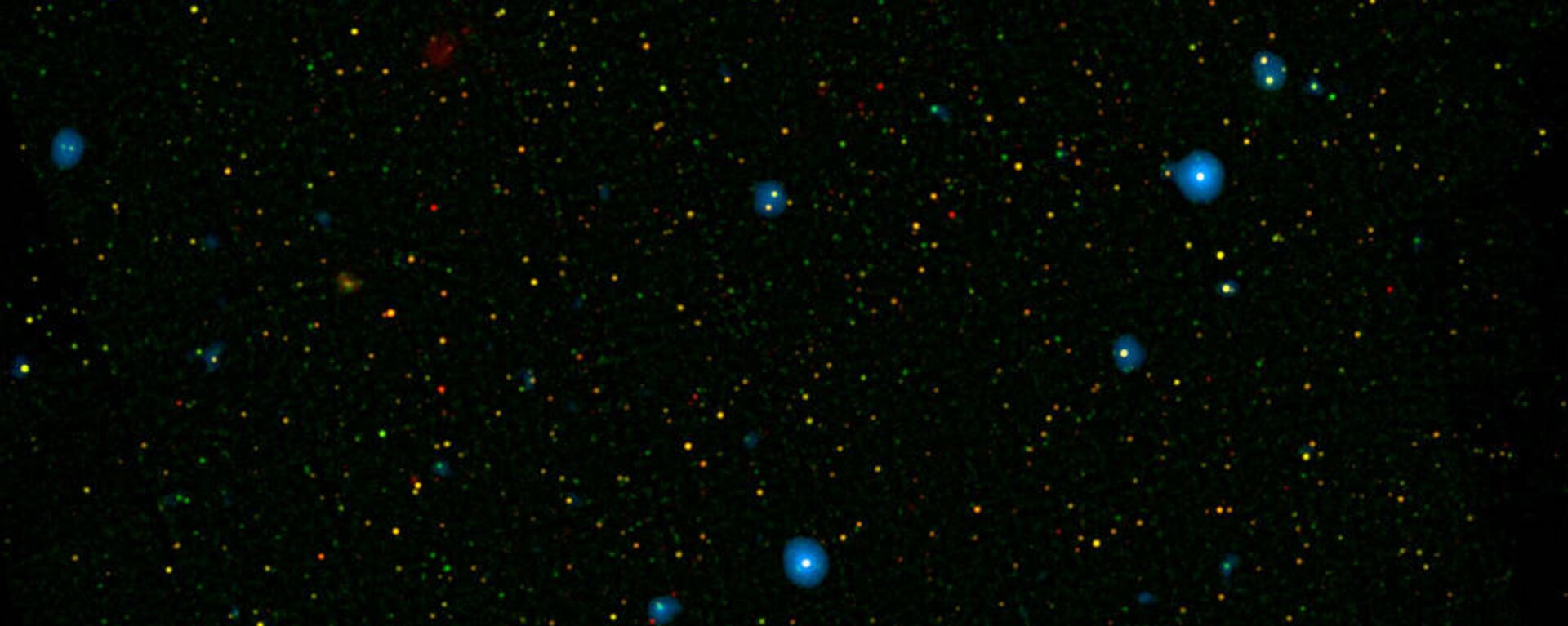Astronomers Discover Mama Black Hole That Gives Birth to Stars Instead of Devouring Them
14:34 GMT 20.01.2022 (Updated: 15:28 GMT 20.01.2022)

© NASA . Space Telescope Science Institut
Subscribe
First theorised about in the 18th century and conclusively identified in the early 1970s, black holes – or regions of spacetime where gravity is so powerful that not even light can escape them – remain one of the most fascinating and mysterious phenomena in the universe.
NASA’s Hubble Telescope has made an incredible discovery, spotting a black hole engaged in the formation of new stars, rather than swallowing them up.
Hubble took images and gathered spectroscopy data of the dwarf galaxy Henize 2-10 – situated about 30 million light years from Earth in the Pyxis constellation, with physicists Zachary Schutte and Amy E. Reines from Montana State University studying the information and determining that a black hole was behind the creation of new stars in the small galaxy.
The researchers, who published their findings in the January issue of Nature, showed that in some instances, the powerful gravitational pull of a black hole which normally sucks particles and radiation into itself can be countered by magnetic fields which redirect these materials into reverse flowing low-velocity plasma jets travelling at speeds close to the speed of light. When the trajectory is right, these jets slam into gas concentrations to create new stars.
Data taken from Hubble confirmed this supposition in the case of the Heniz 2-10 galaxy, showing that gasses volleyed from a black hole toward the dwarf galaxy has been slamming into a dense formation of gasses, forming new stellar clusters.
Sure, black holes might get a bad rep for being hungry, destructive monsters…
— Hubble (@NASAHubble) January 19, 2022
But Hubble found evidence of a black hole creating stars rather than destroying them!
Learn more: https://t.co/xgoyknWyKj pic.twitter.com/yizKRIuFkE
Henize 2-10, which has about a million solar masses, or about a tenth of that our own Milky Way galaxy, sparked a debate among astronomers when it was discovered in 2011, with researchers led by Reines believing the radio and X-ray emissions within were attributable to a black hole, while other astronomers argued that a supernova remnant accounted for the radiation flow.
“Ten years ago, as a graduate student thinking I would spend my career in star formation, I looked at the data from Henize 2-10 and everything changed,” Reines said in a press release. “From the beginning, I knew something unusual and special was happening in Henize 2-10, and now Hubble has provided a very clear picture of the connection between the black hole and a neighbouring star-forming region located 230 light-years from the black hole."
“At only 30 million light-years away, Henize 2-10 is close enough that Hubble was able to capture both images and spectroscopic evidence of a black hole outflow very clearly,” Schutte added. “The additional surprise was, rather than suppressing star formation, the outflow was triggering the birth of new stars,” he emphasised.
The "mothering" role played by Henize 2-10’s black hole runs counter to the one ordinarily attributed to black holes in larger galaxies – where the anomalies suck in any and all particles and even electromagnetic radiation such as light, forming extremely dense, compact spherical bodies – the outward boundaries of which are called the "event horizon," and the centres of which are known as "singularities."
Reines hopes the findings will lead to a closer examination of other dwarf galaxy-black hole combos, with the hope being that new research will help explain how supermassive black holes came to exist in the early universe.



